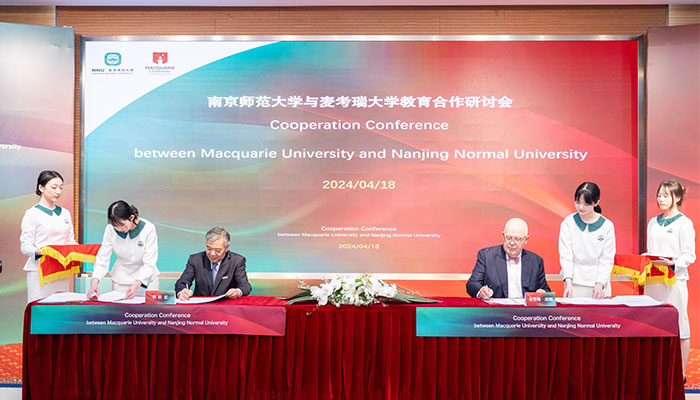Researchers at Macquarie University have been perfecting a technique that may help see nanodiamonds used in biomedical applications. PhD student Jana Say has been working on processing the raw diamonds so that they might be used as a tag for biological molecules.
“We are working with nanodiamonds to process them so that they are stable enough to be used as a probe for single-molecule interactions. As diamonds are made from carbon, they are non-toxic which makes them advantageous for many biological applications over other nanoparticles,” says Say.
The processing technique has already contributed to the success of research projects that have used the diamonds. Working with an international group led by ICFO Prof. Romain Quidant, and in collaboration with Prof. Frank Koppens at ICFO and CSIC (Prof. García de Abajo), Say’s diamonds were able to be optically trapped and manipulated in three-dimensions - this first time this has been achieved.
The findings from this project where published this week in the prestigious Nature Nanotechology journal, and researchers involved concluded that Say’s processing technique is bringing them closer to using diamond in real world applications such as quantum optics, quantum information processing and high-resolution sensing.
The diamonds themselves are incredibly small, 5000 times smaller than a human hair, and so the real strength in Say’s technique is her ability to consistently produce stable samples.
“The real challenge is reliably producing the same sample. It’s a very repetitive and involved process to prepare and characterise these diamonds,” she says.
Say, under the supervision of Dr Louise Brown of the Department of Chemistry and Biomolecular Sciecnes, has plans to continue to develop these diamonds and collaborate with other researchers to explore their full potential.
“Jana’s work is incredibly important,” says Dr Brown. “These diamonds were recently used in a project which won a Macquarie University research excellence award for demonstrating that nanodiamonds can be isolated and made to emit light. With this work, we continue to make real breakthroughs in this area and are contributing to the long term goals in ultrasensitive imaging and sensing technologies.”
“We are working with nanodiamonds to process them so that they are stable enough to be used as a probe for single-molecule interactions. As diamonds are made from carbon, they are non-toxic which makes them advantageous for many biological applications over other nanoparticles,” says Say.
The processing technique has already contributed to the success of research projects that have used the diamonds. Working with an international group led by ICFO Prof. Romain Quidant, and in collaboration with Prof. Frank Koppens at ICFO and CSIC (Prof. García de Abajo), Say’s diamonds were able to be optically trapped and manipulated in three-dimensions - this first time this has been achieved.
The findings from this project where published this week in the prestigious Nature Nanotechology journal, and researchers involved concluded that Say’s processing technique is bringing them closer to using diamond in real world applications such as quantum optics, quantum information processing and high-resolution sensing.
The diamonds themselves are incredibly small, 5000 times smaller than a human hair, and so the real strength in Say’s technique is her ability to consistently produce stable samples.
“The real challenge is reliably producing the same sample. It’s a very repetitive and involved process to prepare and characterise these diamonds,” she says.
Say, under the supervision of Dr Louise Brown of the Department of Chemistry and Biomolecular Sciecnes, has plans to continue to develop these diamonds and collaborate with other researchers to explore their full potential.
“Jana’s work is incredibly important,” says Dr Brown. “These diamonds were recently used in a project which won a Macquarie University research excellence award for demonstrating that nanodiamonds can be isolated and made to emit light. With this work, we continue to make real breakthroughs in this area and are contributing to the long term goals in ultrasensitive imaging and sensing technologies.”



